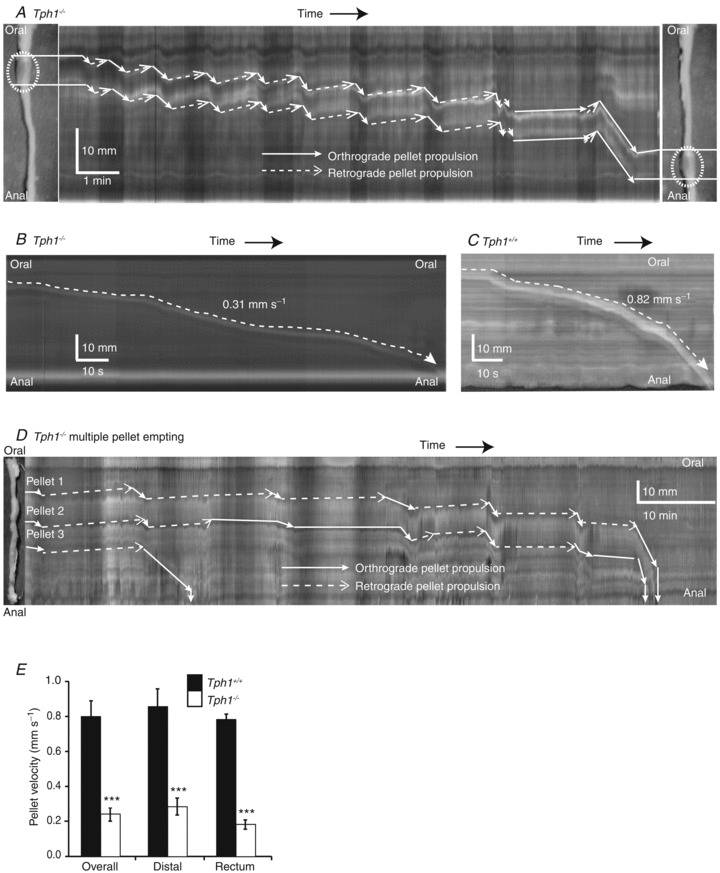Figure 2. Pellet transit in the colon.

A, transit of an artificial faecal pellet (diameter, 3 mm; length, 6 mm; dotted ellipse) in the Tph1−/− mouse with the pellet outlined to show both orthograde and retrograde propulsion in the spatiotemporal map; distance is from top (oral) to bottom (anal), whereas time begins on the left and ends on the right. Whitish streaks indicate pellet movement in an oral to anal direction, not contraction. White lines indicate outer edges of the pellet. Note that orthograde propulsion is indicated by a continuous line preceding a solid arrow and retrograde propulsion is indicated by a dotted line preceding a hollow arrow. B and C, comparison of artificial pellet propulsion in Tph1−/− and Tph1+/+ mice. D, spontaneous emptying of faecal contents in a Tph1−/− mouse. E, plot summarizing overall faecal pellet velocity through the proximal colon, distal colon and rectum of Tph1+/+ and Tph1−/− mice. ***P < 0.001
